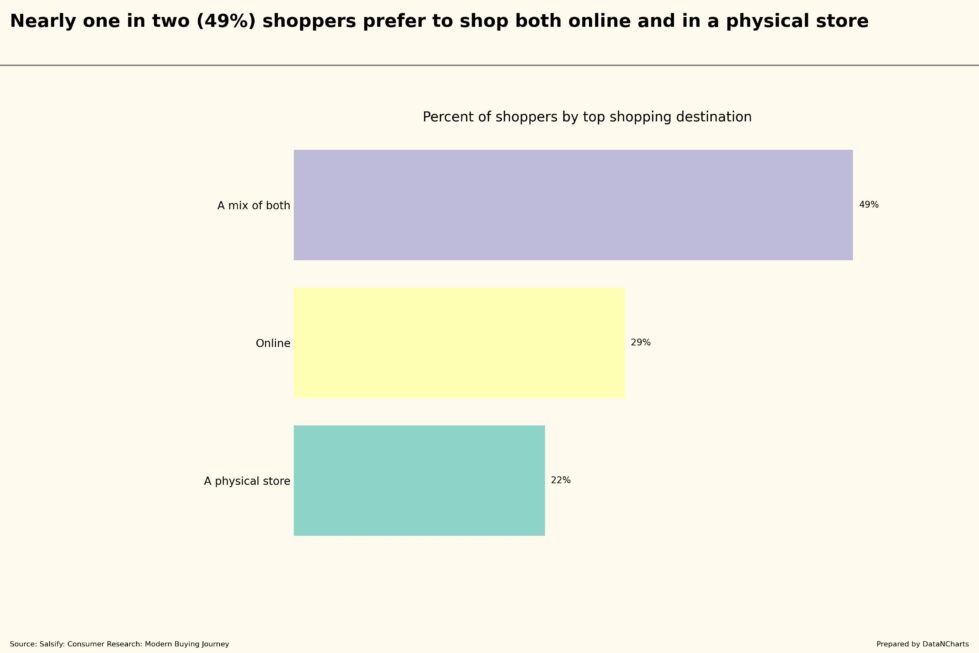Data Highlights
Nearly half (49%) prefer combining physical stores with online shopping.
Almost three in ten (29%) shoppers buy exclusively online.
About one in five (22%) shoppers prefer purchasing from physical stores.
Scope
Shoppers now expect smooth buying experiences between online and physical stores. E-commerce trends confirm shoppers no longer stick to one channel exclusively. This brief examines where shoppers prefer to make final purchases. Readers will understand shopper preferences clearly, gaining insights to optimize customer experiences and refine shopper marketing strategies.
Mixed Shopping Experiences Lead Preferences (49%)
Nearly half (49%) of shoppers regularly use a blend of online and physical stores before finalizing purchases. These shoppers typically research online but prefer confirming product quality or availability in-store. Retailers should focus on integrating digital and physical channels smoothly. Brands clearly aligning online information with in-store availability influence the shopper path to purchase significantly.
Still, some shoppers complete their journeys fully online.
Online Shopping Remains Highly Preferred (29%)
Nearly three in ten (29%) shoppers prefer fully digital purchasing. These shoppers value convenience, variety, and easy product comparisons. Brands targeting this group must optimize their digital consumer engagement and e-commerce customer experience. Clear content, effective visuals, and frictionless checkout strongly influence these online-only buyers.
Despite digital growth, physical stores hold clear value.
Physical Stores Still Attract a Key Shopper Segment (22%)
About one in five (22%) shoppers make purchases exclusively from physical retail stores. These consumers prioritize immediacy, product interaction, or in-store shopper behavior like impulse buying. Retail analytics confirm physical store experiences remain influential, especially when enhanced through retailtainment or personalized shopper experience design.
Insights and Opportunities
Shopper preferences clearly highlight the need for integrated, strategic approaches across channels. Implementing these recommendations will help brands guide shoppers more effectively, increasing sales and customer loyalty.
- Firstly, brands must strengthen omnichannel shopping experiences. Retailers providing integrated experiences across online and physical stores can expect improved shopper satisfaction, fewer abandoned carts, and higher customer loyalty. Clear KPIs to measure success include increased repeat purchase rates, improved customer satisfaction scores, and higher overall sales.
- Secondly, invest clearly in digital engagement for online-only shoppers. Effective product content, easy-to-use interfaces, and faster checkouts will lead to increased online sales, reduced bounce rates, and higher conversion rates. Brands can measure improvements by tracking online conversion rates, average order values (AOV), and reductions in cart abandonment rates.
- Finally, retailers should enhance physical store experiences for in-store shoppers. Clear, engaging store layouts, personalized offers, and experiences tailored to encourage impulse buying behavior directly boost in-store sales. Retailers implementing these strategies can anticipate higher customer engagement, increased impulse purchases, and better overall store performance. Measure this by tracking in-store conversions, average transaction value, and overall foot traffic trends.
By clearly understanding and responding to shopper preferences, brands will strategically align with the consumer decision-making process, effectively guiding customers toward final purchases.
